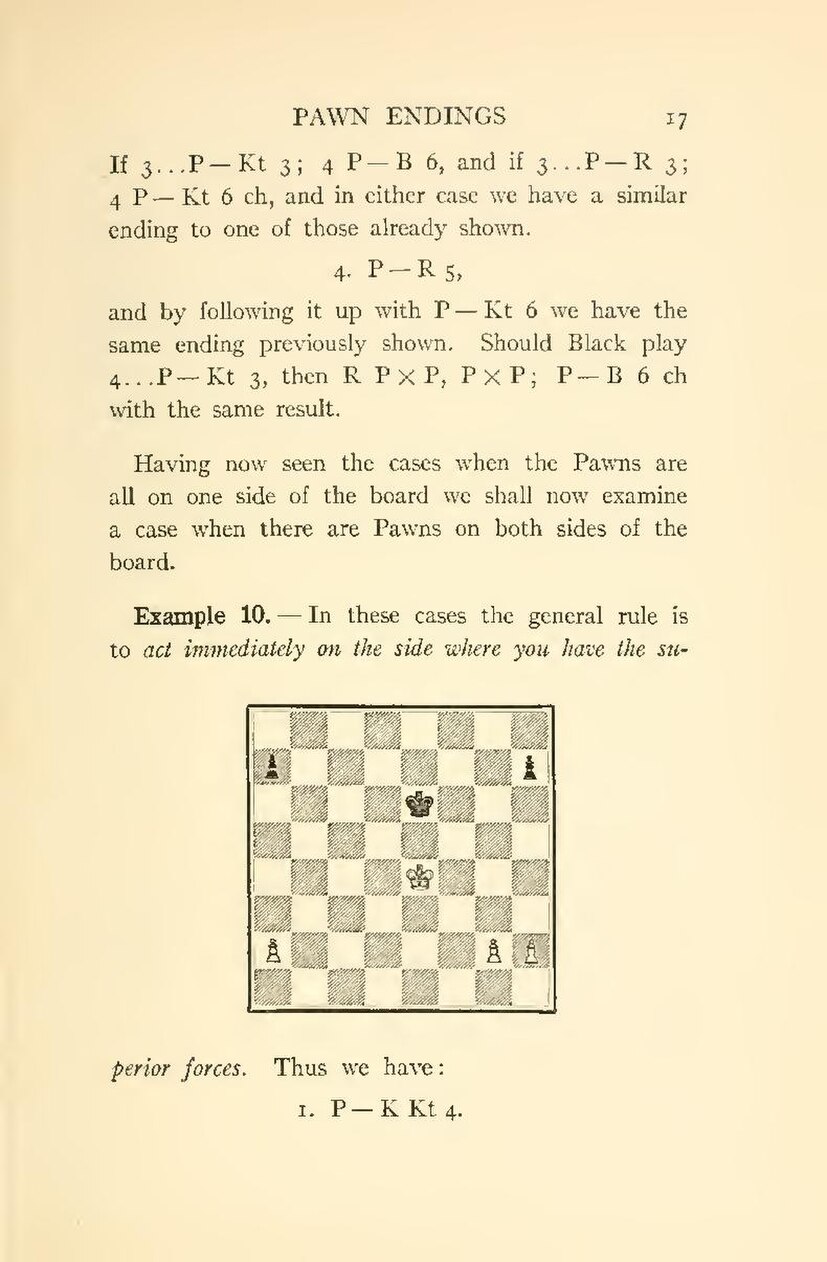PAWN ENDINGS
17
If 3...P - Kt 3; 4 P - B 6, and if 3...P - R 3; 4 P - Kt 6 ch, and in either case we have a similar ending to one of those already shown.
4. P - R 5,
and by following it up with P - Kt 6 we have the same ending previously shown. Should Black play 4...P - Kt 3, then R P × P, P × P; P - B 6 ch with the same result.
Having now seen the cases when the Pawns are all on one side of the board we shall now examine a case when there are Pawns on both sides of the board.
Example 10.—In these cases the general rule is to act immediately on the side where you have the superior forces. Thus we have:
1. P - K Kt 4.

